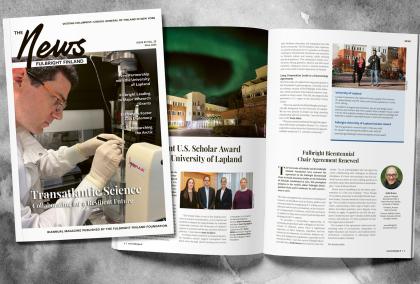Starting Point
When planning where to apply to university in the U.S., start with your future goals - both academic and professional. Think about the kind of career you are aiming for, the environments that will support your growth, and the impact you hope to make through your work. Consider the causes you care about and how your education might help you contribute to them. Your interests, ambitions, and long-term plans should guide your university choices.
The "Fit": Academic and Financial
The universities you decide to apply to need to fit both your
- academic and professional plans and your future goals, as well as
- your financial situation
Academic Fit
When considering the university's academic fit for you, take these questions into account:
- Is the university strong in your area of specialization particularly? Does the university offer strong programs in your field of study?
- Are there faculty members whose research aligns with your interests? The research focus of the department often also affects whether you will be selected and whether the department is interested in you.
- Is the curriculum, such as the subjects, courses, and skills students are expected to gain, well-suited to your goals (e.g., theoretical vs. applied)?
- Find out in advance how you can register for classes. Some universities (like Harvard and Columbia, according to the Foundation alumni) even raffle off participation for certain courses, meaning that it's up to chance if you get to participate or not.
- Doctoral degree-seeking students, in particular, should start with the question of who they want to work with. Identifying where an interesting professor or research group whose work aligns with yours is situated is the first step in the university search phase.
Tip from Fulbright U.S. Professor:
Talk to other students of the program when you are considering universities – they talk candidly about their experience and studying there, and you get internal tips!
Financial Fit
It is important to think realistically about how you will cover all your expenses during your studies. When evaluating whether a university is a financial fit for you, it's important to look beyond just tuition and fees. Consider the full scope of study-related expenses, including:
- Tuiton and fees
- Books and supplies
- Health insurance
- Travel costs
- Personal expenses
- Living expenses (e.g. housing, food) in the specific city or area where the university is located
Tuition and university fees
Tuition costs vary by university. As an international student, you will be considered an out-of-state student, who typically have higher tuition rates than in-state students. Here are examples of university tuition and fees costs for out-of-state students:
- Master’s degree students: USD 20 000 to USD 85 000 per academic year
- Doctoral degree students: USD 25 000 to USD 80 000 per academic year
In addition to tuition, student needs to pay separate university fees such as student services fees, lab or program fees, and technology fees. These fees vary by university and program, and are important to factor into your budget. Sometimes the cost is indicated as a combination of tuition & fees, and sometimes fees are published separately.
Cost of Living
The cost of living can often form even a bigger part of your study budget than tuition. The cost of living in the U.S. has increased significantly in recent years and varies depending on the area. The most expensive areas to live in are, for example, New York City, Boston, and California, and the more affordable areas are, for example, Indiana, Ohio, and Wisconsin.
- The monthly maintenance rate (MMR), which refers to the estimated monthly cost of living in a specific U.S. city or region, is USD 2 800 - USD 4 300 per month (including housing, food, transportation, incidental expenses, books, and supplies), depending on the area. This rate is used to determine how much funding a student needs to qualify for a visa and to cover living expenses during their studies.
- MMR in Los Angeles, California is USD 4 300/month and in Milwaukee, Wisconsin USD 2 830/month
- In addition, if you have a spouse and/or children joining you in the U.S., you will need to take into account USD 660-USD 1 330/month for your spouse and USD 330-USD 665/month for each child.
- In the visa application phase, you will need to prove you have enough funds to cover
- tuition and the other study costs listed above, and
- your living expenses (and the living expenses of possible family members) for the academic year (i.e. MMR x 9-12 months).
Be realistic with your financial plan!
University Funding Opportunities and Financial Planning
Your financial fit depends not only on the above-listed costs but also on the funding opportunities the university offers. The availability of university-provided tuition waivers, scholarships, research/teaching/graduate assistantships, and grants varies by institution. To ensure a sustainable study plan with realistic financial support, it is essential to choose to apply to universities that offer substantial funding to international students for the full duration of their studies.
In the U.S., doctoral students' expenses are typically covered primarily by the host institution. Support varies by university and department, but many U.S. PhD programs offer full funding packages, especially in STEM and social sciences.
The Placement Service will assist you in identifying institutions that are more likely to provide good financial support to international students. The Placement Service's goal is for grantees to be funded by their host universities throughout their studies, when completing a degree.
Applying for additional funding alongside the Fulbright grant is highly encouraged, as long as your primary affiliation remains with the Fulbright Finland Foundation. Check our list of additional funding for other possible grants and scholarships to apply for.
Ranking lists
If you wish to look into ranking lists, it's often more useful to focus on field-specific university rankings than general rankings. Always check the methods and evaluation criteria used to compile each list. Ranking lists should never be your only source of information when selecting universities.
Aim high - but with a backup plan!
For Fulbright master's students applying through the Placement Service, you will need to have a list of four universities (i.e. your submission plan). Doctoral degree seeking students need to have a list of five universities. You can also apply to additional universities independently if you wish.
When applying through the Placement Service, your submission plan can include one 'dream school' and three additional universities for master’s applicants, or four additional universities for doctoral applicants. Reach for your top choices, but prepare wisely with alternatives to ensure a strong overall application strategy.
Your submission plan needs to be balanced.
Aim high with your university choices, but balance your university applications with a solid backup plan.
The submission plan is drafted together with your Placement Advisor from the Placement Service (with the Foundation copied in all messages). The plan is then sent to the Foundation for approval before the application process to the U.S. universities begins.
Commit to your submission plan
Once you (and the Foundation) approve of your submission plan, you must commit to applying to all of the schools in your plan. You should also commit to attending any of the schools in your plan, should you get admitted. The list should not include any schools that you would not be willing to attend.
In the spring, once you have received all your university admission results, you are free to choose the university you want to attend from the universities you have been admitted to. The admission reply deadline is often either April 15th or May 1st. Universities usually grant applicants extra time to make a decision upon request, especially if you are waiting to hear back from another school.
The Placement Service advises that it is not good form or possible to accept a spot at a university "just in case" and then turn it down if something better (a more preferable university's admission decision) comes along later. An accepted offer is viewed as a firm commitment.
Use your networks
When considering suitable university options in the U.S., in addition to the Placement Service support, it is useful to search for people from your own network who could already have links and contacts to U.S. experts in your field or knowledge about the strongest institutions in the U.S. in your particular field of specialization. Ask the people in your networks for tips on suitable universities to study at. Reach out to, for example:
- professors, mentors, colleagues, advisors - put their international networks to use
- Fulbright Finland Foundation's network of alumni, professors, students, and researchers - check out the grantee lists on Finnish and U.S. Fulbrighters and Outreach Ambassadors, for instance.
Activate your networks and leave no stone unturned!


